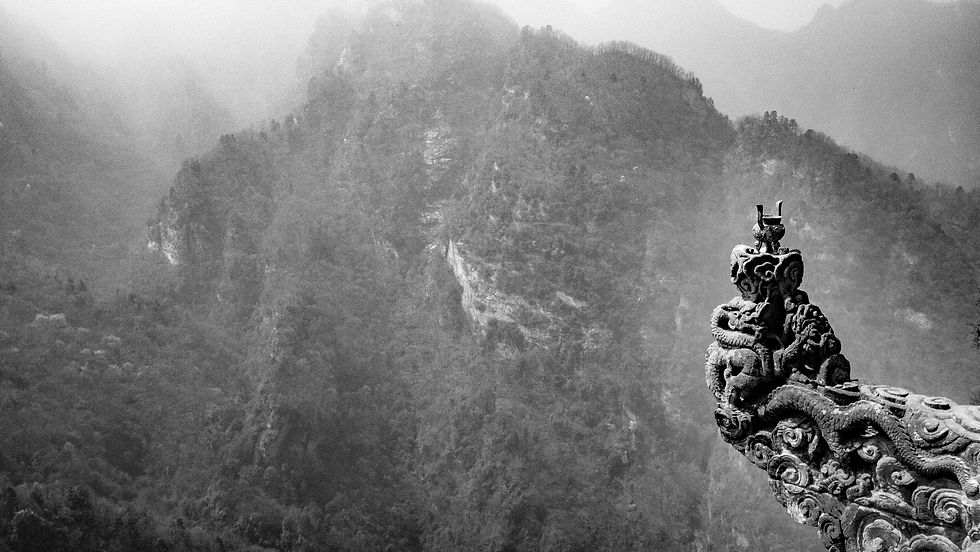Gli Anni Folli 瘋狂歲月
- Robin Yong

- May 3
- 3 min read

Lorenzo Marconi, my old friend at the Venice Carnevale says the title for his costume this year is called "The Crazy Years". A tribute to the twenties of the last century, the years of the Charleston, of the madness that came after the First World War. The doll is a flapper, the cheerful, dancing, feminist woman who drove cars and was free. The green car is a tribute to the painting by Tamara de Lempicka.
Autoportrait (Tamara in a Green Bugatti) is a self-portrait by the Polish artist Tamara de Lempicka, which she painted in Paris in 1929. It was commissioned by the German fashion magazine Die Dame for the cover of the magazine, to celebrate the independence of women. It is one of the best-known examples of Art Deco portrait painting.


Flappers were a subculture of young Western women prominent after the First World War and through the 1920s who wore short skirts (knee length was considered short during that period), bobbed their hair, listened to jazz, and flaunted their disdain for prevailing codes of decent behavior. Flappers have been seen as brash for wearing excessive makeup, drinking alcohol, smoking cigarettes in public, driving automobiles, treating sex in a casual manner, and otherwise flouting social and sexual norms. As automobiles became more available, flappers gained freedom of movement and privacy.
Flappers are icons of the Roaring Twenties, a period of postwar social and political turbulence and increased transatlantic cultural exchange, as well as of the export of American jazz culture to Europe. More conservative people, who belonged mostly to older generations, reacted with claims that the flappers' dresses were "near nakedness" and that flappers were "flippant", "reckless", and unintelligent.
While primarily associated with the United States, this "modern girl" archetype was a worldwide phenomenon that had other names depending on the country, such as joven moderna in Argentina or garçonne in France or moga in Japan, although the American term "flapper" was the most widespread internationally.
The Roaring Twenties, a period of unprecedented social and cultural change, found its perfect visual expression in Art Deco. This dazzling style, with its geometric forms, streamlined silhouettes, and luxurious materials, perfectly captured the era's exuberance and optimism. From the skyscrapers reaching for the sky to the sleek automobiles gliding along newly paved roads, Art Deco infused everyday life with a sense of glamour and modernity. Its influence was pervasive, evident in architecture, fashion, graphic design, and even furniture, creating a cohesive aesthetic that reflected the rapid technological advancements and the burgeoning consumer culture of the time. The bold colors, rich textures, and intricate detailing of Art Deco spoke to a desire for opulence and a rejection of the staid sensibilities of the previous era.
Beyond its aesthetic appeal, Art Deco held a deeper significance. It represented a break from tradition, a celebration of the machine age, and a belief in the power of progress. The style's clean lines and symmetrical designs reflected a desire for order and efficiency, while its intricate ornamentation and lavish materials hinted at the newfound wealth and prosperity enjoyed by many. This juxtaposition of streamlined modernity and opulent detail perfectly embodied the complex and often contradictory nature of the Roaring Twenties themselves. The era's fascination with speed and technology found its visual equivalent in the dynamic energy of Art Deco's designs, a style that continues to inspire and captivate audiences today.
The influence of Art Deco extended far beyond the purely decorative. Its principles were applied to everything from posters advertising Broadway shows to the interiors of luxury ocean liners. This widespread adoption speaks to its versatility and its ability to resonate with a broad range of tastes and purposes. Even today, the enduring appeal of Art Deco lies in its ability to simultaneously convey a sense of sophistication, modernity, and timeless elegance. The distinctive style continues to be a source of inspiration for designers and artists, serving as a powerful reminder of the energy and innovation that characterized the Roaring Twenties.



Lorenzo is a doll maker and a real artist. He has a handicraft store Marconilanda in Senigallia. Every year, he comes to the Venice Carnevale in a brand new costume. He is one of my favourite photo subjects. The flapper doll he holds in the pictures is one of his most iconic creations.
I have been to the Venice Carnevale more than 10 times now...when I photograph Venice, I see not the iconic tourist destination the city has become, but society that resides behind its elegant doors and shuttered windows....
As usual, the portraits are just done on the busy streets of Venice and using natural lighting only...It is not an indoor photo studio, there is no artificial lighting, flash or reflectors...






Comments